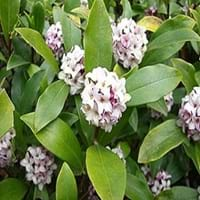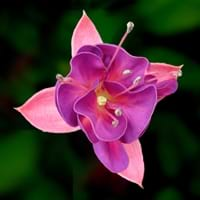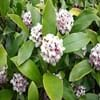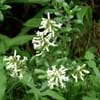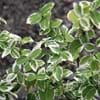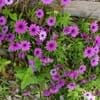Life Span
Perennial
Perennial
Type
Broadleaf Evergreen
Tender Perennial
Types
Not Available
Fuchsia Decidua, Fuchsia Fulgens, Fuchsia Splendens, Fuchsia Microphylla
Number of Varieties
Not Available
Habitat
Upland
Forest edges, Woods
USDA Hardiness Zone
8-9
9-10
AHS Heat Zone
Not Available
10-9
Sunset Zone
21,22
16, 17, 23, 24
Habit
Oval or Rounded
Arching/Fountain-shaped
Flower Color
White
Orange Red
Flower Color Modifier
Bicolor
Not Available
Fruit Color
Crimson
Not Available
Leaf Color in Spring
Green, Dark Green
Purple, Dark Green
Leaf Color in Summer
Green, Dark Green
Purple, Dark Green
Leaf Color in Fall
Green, Dark Green
Purple, Dark Green
Leaf Color in Winter
Green, Dark Green
Unknown
Leaf Shape
Elliptic
Long Linear
Plant Season
Spring, Summer, Fall
Spring, Summer, Fall, Winter
Sunlight
Full Sun, Partial Sun, Partial shade
Full Sun, Partial Sun, Partial shade
Growth Rate
Medium
Medium
Type of Soil
Loam
Clay, Loam, Sand
The pH of Soil
Neutral
Acidic, Neutral
Soil Drainage
Well drained
Average
Bloom Time
Spring, Late Spring
Indeterminate
Tolerances
Not Available
Drought
Where to Plant?
Container, Ground, Pot
Container, Ground, Pot
How to Plant?
Grafting, Seedlings
Seedlings, Stem Planting, Transplanting
Plant Maintenance
Medium
Medium
Watering Requirements
Do Not over Water, Medium, Never Over-water, Requires regular watering, Water more in summer
Requires regular watering
In Summer
Lots of watering
Lots of watering
In Spring
Moderate
Moderate
In Winter
Average Water
Average Water
Soil pH
Neutral
Acidic, Neutral
Soil Type
Loam
Clay, Loam, Sand
Soil Drainage Capacity
Well drained
Average
Sun Exposure
Full Sun, Partial Sun, Partial shade
Full Sun, Partial Sun, Partial shade
Pruning
Prune in early spring, Remove damaged leaves, Remove dead branches, Remove dead leaves
Prune in spring, Prune lower leaves, Remove dead or diseased plant parts, Remove deadheads, Remove shoots
Fertilizers
Fertilize after blooming period, fertilize in growing season
All-Purpose Liquid Fertilizer
Pests and Diseases
Red blotch
Rhizoctonia Root Rot, Rust
Plant Tolerance
Drought, Shade areas
Drought
Flower Petal Number
Single
Single
Foliage Texture
Medium
Medium
Foliage Sheen
Glossy
Matte
Attracts
Insects
Hummingbirds
Allergy
Skin irritation
Asthma, Hay fever
Aesthetic Uses
Beautification, Bouquets, Landscape Designing, Showy Purposes
Showy Purposes
Beauty Benefits
Not Available
Not Available
Environmental Uses
Air purification
Air purification
Medicinal Uses
Diabetes, Nutrients, Wounds
Not Available
Part of Plant Used
Leaves
Flowers, Fruits
Other Uses
Decoration Purposes, Showy Purposes, Used as Ornamental plant, Used in paper industry
Not Available
Used As Indoor Plant
Yes
Yes
Used As Outdoor Plant
Yes
Yes
Garden Design
Cutflower, Foundation, Mixed Border
Bedding Plant, Container, Feature Plant, Foundation, Hedges, Tropical
Botanical Name
DAPHNE acutiloba
FUCHSIA triphylla
Common Name
Daphne plant
Fuchsia
In Hindi
डाफ्ने संयंत्र
फ्यूशिया
In German
Daphne Pflanzen
Fuchsie
In French
plante Daphne
Fuchsia
In Spanish
planta de Daphne
Fucsia
In Greek
Δάφνη φυτών
φουξία
In Portuguese
Daphne planta
Fúcsia
In Polish
Daphne roślin
Fuksja
In Latin
Daphne plant
Fuchsia
Phylum
Not Available
Magnoliophyta
Class
Magnoliopsida
Dicotyledonae
Family
Thymelaeaceae
Onagraceae
Clade
Angiosperms, Asterids, Rosids
Angiosperms, Eudicots, Rosids
Tribe
Not Available
Not Available
Subfamily
Not Available
Not Available
Difference Between Daphne and Fuchsia
If you are confused whether Daphne or Fuchsia are same, here are some features about those plants to help you choose better. Many people think that these two plants have the same characteristics, but one can see Daphne and Fuchsia Information and learn more about it. Fertilizers required for proper growth of Daphne are Fertilize after blooming period and fertilize in growing season, whereas for Fuchsia fertilizers required are All-Purpose Liquid Fertilizer. Hence, one should know the basic difference between Daphne and Fuchsia if you are planning to have them in your garden to enhance its beauty.
<
Flowering PlantsImportance of Daphne and Fuchsia
Want to have the most appropriate plant for your garden? You might want to know the importance of Daphne and Fuchsia. Basically, these two plants vary in many aspects. Compare Daphne and Fuchsia as they differ in many characteristics such as their life, care, benefits, facts, etc. Every gardener must at least have the slightest clue about the plants he wants to plant in his garden. Compare their benefits, which differ in many ways like facts and uses. The medicinal use of Daphne is Diabetes, Nutrients and Wounds whereas of Fuchsia is Not Available. Daphne has beauty benefits as follows: Not Available while Fuchsia has beauty benefits as follows: Not Available.
Compare Facts of Daphne vs Fuchsia
How to choose the best garden plant for your garden depending upon its facts? Here garden plant comparison will help you to solve this query. Compare the facts of Daphne vs Fuchsia and know which one to choose. As garden plants have benefits and other uses, allergy is also a major drawback of plants for some people. Allergic reactions of Daphne are Skin irritation whereas of Fuchsia have Asthma and Hay fever respectively. Having a fruit bearing plant in your garden can be a plus point of your garden. Daphne has showy fruits and Fuchsia has no showy fruits. Also Daphne is not flowering and Fuchsia is flowering. You can compare Daphne and Fuchsia facts and facts of other plants too.
